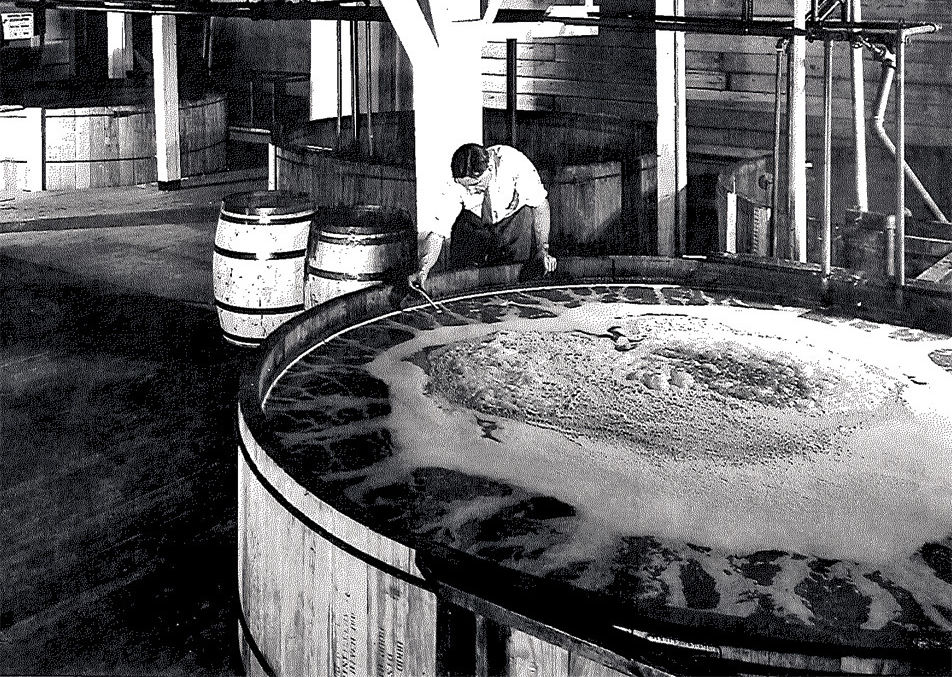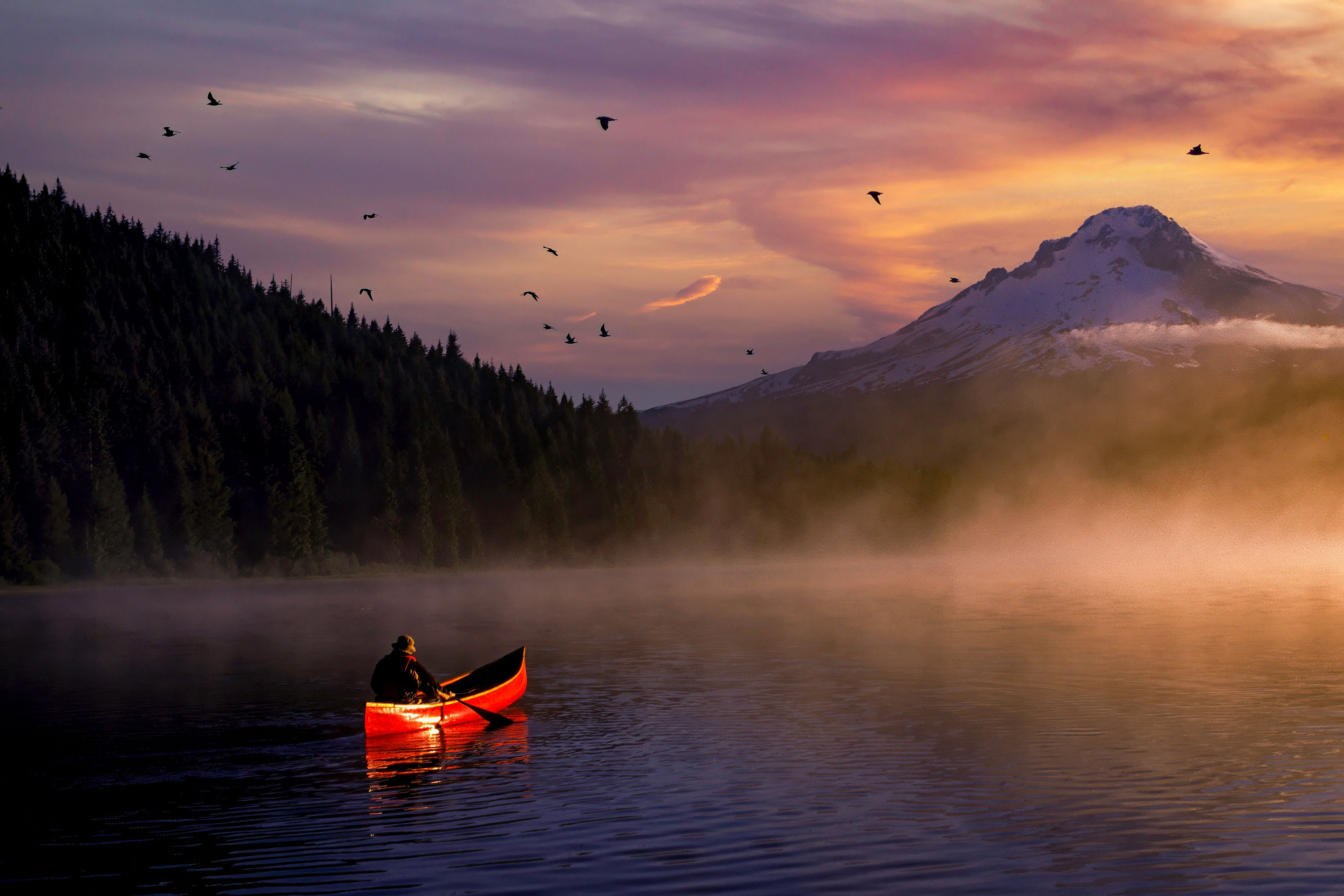Time in a Bottle

From the interstate highway that hums through the wind-scoured Columbia River Gorge, the town of Hood River’s most conspicuous building is the Full Sail brewery, with its large block letters reading “Tasting Room & Pub” and its logo of a wind-filled sheet. When it was founded twenty-two years ago, Full Sail stood at the forefront of Oregon’s, and the nation’s, microbrewing revolution. Yet its longevity fails to approach that of the weathered stone building just across the highway. There, in the Port of Hood River industrial park, the Northwest’s largest, longest-operating liquor manufacturer quietly churns away.
Hood River Distillers has been in the booze business since the summer of 1934, just twelve months after the repeal of Prohibition. Last year, Hood River produced 1.2 million cases of liquor, while the state’s second-largest producer, Bendistillery, made about twenty thousand.
Ron Dodge, Hood River’s fifty-one-year-old president and CEO, strolls alongside the clinking, clattering bottles filing endlessly down the production line. He started working here in the fall of 1980, some forty years after his grandfather, once a Portland cab driver, became a principal investor. Dodge has watched the company grow into an operation that bottles four hundred to five hundred cases per hour of what the company refers to as its value brands: HRD and Baron Rothschild vodkas, and the ubiquitous Northwest well brand Monarch. (On the line today is HRD Vodka, which costs $7.45 a bottle and is the best-selling spirit in Oregon.) The company produces its top-shelf brands on a smaller scale: Pendleton Whisky, Yazi ginger-flavored vodka, and Ullr, a new schnapps simply dubbed a “Nordic libation.”
“Basically, we’re the smallest of the big guys in the country,” Dodge says, explaining Hood River’s position as one of the last of the country’s regional distilleries.
He steps off the production floor and into the quality-control lab, where he sips a 190-proof neutral spirit from a thimble-size plastic cup. He chews a bit, then spits into a sink. From this distilled spirit, the company makes its vodkas and cordials—by blending it, charcoal-filtering it, and finally cutting it with Hood River’s famously clean tap water. The spirit itself, like many bottled here, arrived in a thirty-thousand-gallon railcar and was produced in the Midwest. That’s right: the largest licensed distillery in the Northwest no longer actually distills anything. It imports, remixes, bottles. Hood River Distillers sold off most of its stills in the late sixties and hasn’t really used one since, though this might soon change.
The trio of Hood River businessmen who founded the distillery started with apple and loganberry wine, using surplus fruit from local orchards. They moved on to apple and pear brandies, which they bottled as the Old Delicious brand and sold across Oregon for ninety cents a pint. During World War II, the federal government commissioned the stills of American distilleries to make industrial alcohols used in the production of rubber and explosives; Hood River Distillers never really recovered after that, and in 1947, a private consortium of five families bought the company. The families still own it today.
By 1955, Americans had lost their taste for aged fruit brandies and turned to vodka, so the company started producing HRD Vodka. Because making alcohol from fruit is less efficient than making it from grain, the company started acquiring its alcohol from large-volume grain distillers in the Midwest. In the sixties, Hood River started importing rum, scotch, tequila—you name it—to create its value line, Monarch. But rising grain prices and the cost of plastic and glass bottles soon squeezed profits. “We needed to come up with something we could sell throughout the country,” Dodge says. “The only thing that would let us do that was a premium product.”
That was in 1999, and Dodge’s thinking would prove prescient. Case sales of premium spirits rose nationwide by nearly 19 percent between 2002 and 2005, according to the Distilled Spirits Council of the United States, while sales of value brands grew by barely 2 percent. Working with the famous Pendleton Round-Up rodeo, HRD came up with the idea to sell top-shelf Canadian whisky aimed, oddly enough, at enthusiasts of the American West. There soon followed Pendleton Whisky, bearing “Let ’er Buck,” the rodeo’s longtime slogan. Pendleton Whisky sold seventy-four thousand cases across forty-two states last year, a stunning success for a regional company competing with giant multinational firms.
This year, Hood River’s sales have dipped slightly. Still, Dodge says, recent figures suggest that customers who buy premium liquor are sticking by their brands. “The premium craze is what opened the door for boutique distillers,” he says, adding that craft distillers often make up for their lack of scale and volume with price. “Many of them get started out of a passion for distilling; only later on do many of them face business realities, and [the question of] whether they can keep going,” he says. Yet on the other hand, he says, “The whole world has changed. Products that have a unique sense of place are becoming more desirable.”
Dodge still thinks about a purchase order he filled out years ago but sat on when money got tight. The order was for a still. Dodge had planned to resume producing, after all these years, the aged brandies on which the company was founded, using the Hood River fruit that still grows in abundance. Now could be just the right time, he thinks.




